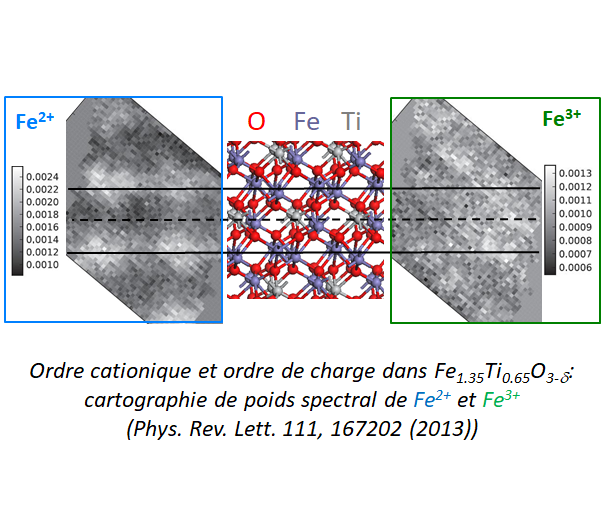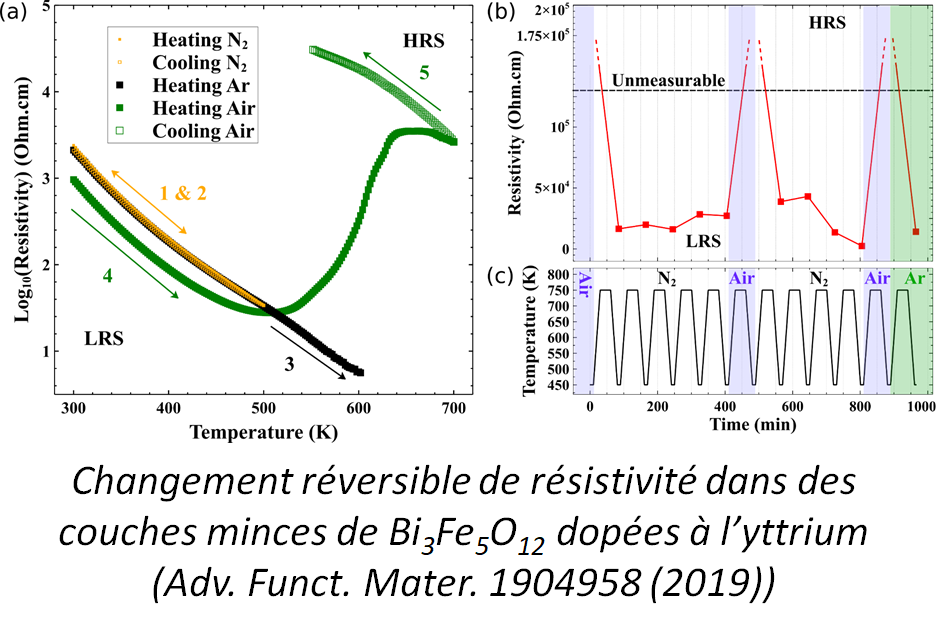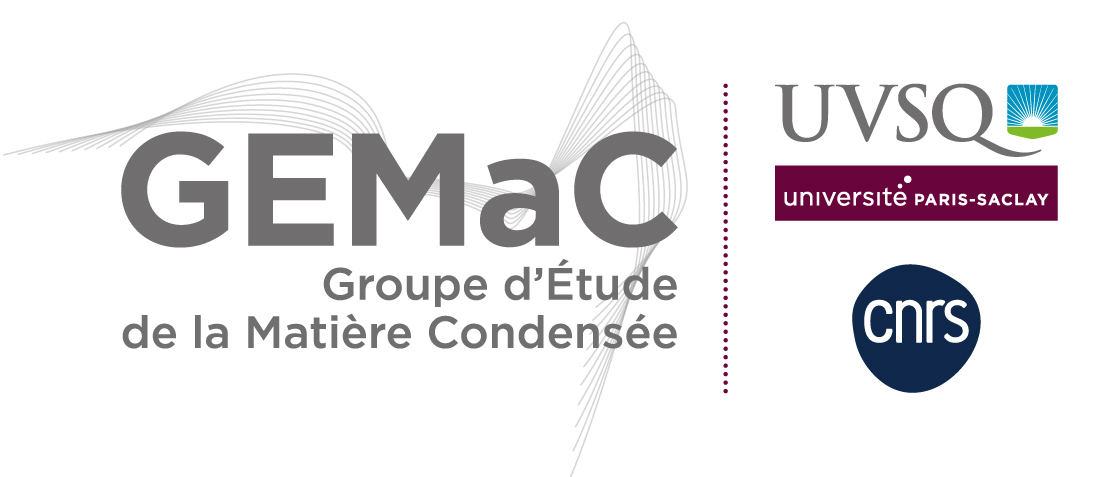In the transition metal oxide systems, the challenge is to combine in a single material several physical properties of interest to modern electronics. The obtained system is then called a multifunctional material. We are particularly interested in the coupling of electrical and magnetic properties in complex oxides (magneto-electrical coupling or magnetic semiconductor). We study the electrical (doping, conduction mechanisms) and magnetic activity in these functional oxides which are more complex and less explored in terms of defects than classical semiconductors. This is one of the challenges of their integration into tomorrow's "all-oxide" electronics, with versatile and innovative functions.

One example of a magnetic functional oxide is the (Fe,Ti)2O3 solid solution having a corundum structure. Through a broad collaboration, we have conducted the study of Fe2-xTixO3-δ, presenting the possibility of mixed valence (+2/+3) on the iron ion and variable oxygen stoichiometry, in order to induce spin polarization of charge carriers. The electronic conductivity mechanisms were related to activated hopping (associated with "Efros-Shklovskii variable range hopping") up to the Curie temperature of about 420 K, giving significant magnetoresistance values (+30% at 300 K). A superlattice growth engineering of variable cationic composition allows to generate an extraordinary
Hall effect (transverse magnetoresistance hysteresis), signature of a spin polarization, however not directly related to the
magnetization cycle. In this system, we have demonstrated the inversion of carrier type from p to n related to oxygen vacancies.

Another extremely versatile functional material is a magnetic garnet. In particular, we have been studying bismuth iron garnet (Bi3Fe5O12 or BIG), which is a remarkable multifunctional compound existing only as a thin layer. After having achieved the non-trivial
synthesis of this material, we have carried out in-depth studies of the physical properties in relation to the crystal structure. We have evidenced the magneto-electric coupling in BIG. Moreover, the
magneto-optical response of BIG allowed us both to validate a model of the electronic band structure with gaps in the density of states related to the type of carriers and to study the effects of dimensionality reduction down to thicknesses of a few unit cells. In collaboration with the
University of Nijmegen,
IJL Nancy and
IPCMS Strasbourg, we studied the time-resolved magnetization dynamics and demonstrated the inverse Faraday effect enabling to manipulate magnetization by light. Based on the computation of the spin-resolved band structure, we started the investigation of the aliovalent cationic doping of the BIG with purpose to make it p-type semiconductor. In collaboration with the
STEM team at the LPS, we aim to correlate the transport mechanism with the doping at the atomic level (cationic distribution and charge transfer).
Based on these findings, we are working towards artificial materials engineering, with the challenge of addressing both spatial and topological confinement phenomena.
Currently, we are starting a joint project (SPINOXIDE) led by
CRHEA Sofia-Antipolis aiming at the spin polarization of photo-generated carriers in ZnO. In this project we are associated with the
NSP team of GEMaC side and teams specialized in time-resolved magneto-optics from
IPCMS-Strasbourg and
LPCNO-Toulouse. The FOX team is in charge of
epitaxy and
DC magnetic studies of ferrimagnets with high spin polarization (Fe3O4, (Fe,Ti)2O3) grown on 2D or 1D ZnO-based nanostructures.






 One example of a magnetic functional oxide is the (Fe,Ti)2O3 solid solution having a corundum structure. Through a broad collaboration, we have conducted the study of Fe2-xTixO3-δ, presenting the possibility of mixed valence (+2/+3) on the iron ion and variable oxygen stoichiometry, in order to induce spin polarization of charge carriers. The electronic conductivity mechanisms were related to activated hopping (associated with "Efros-Shklovskii variable range hopping") up to the Curie temperature of about 420 K, giving significant magnetoresistance values (+30% at 300 K). A superlattice growth engineering of variable cationic composition allows to generate an extraordinary
One example of a magnetic functional oxide is the (Fe,Ti)2O3 solid solution having a corundum structure. Through a broad collaboration, we have conducted the study of Fe2-xTixO3-δ, presenting the possibility of mixed valence (+2/+3) on the iron ion and variable oxygen stoichiometry, in order to induce spin polarization of charge carriers. The electronic conductivity mechanisms were related to activated hopping (associated with "Efros-Shklovskii variable range hopping") up to the Curie temperature of about 420 K, giving significant magnetoresistance values (+30% at 300 K). A superlattice growth engineering of variable cationic composition allows to generate an extraordinary  Another extremely versatile functional material is a magnetic garnet. In particular, we have been studying bismuth iron garnet (Bi3Fe5O12 or BIG), which is a remarkable multifunctional compound existing only as a thin layer. After having achieved the non-trivial
Another extremely versatile functional material is a magnetic garnet. In particular, we have been studying bismuth iron garnet (Bi3Fe5O12 or BIG), which is a remarkable multifunctional compound existing only as a thin layer. After having achieved the non-trivial